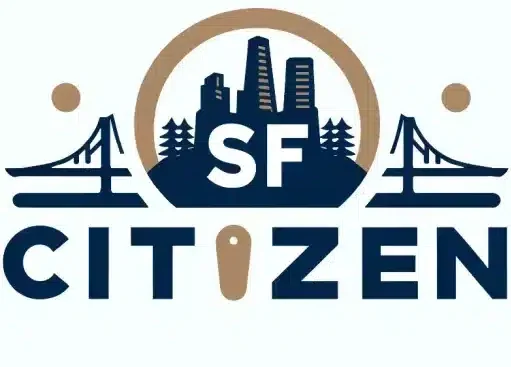San Francisco, known for its iconic Golden Gate Bridge and diverse neighborhoods, is also home to a thriving surf scene. With its unique geographical location and exposure to varying marine conditions, the city offers a range of surfing experiences for enthusiasts of all levels. Surfline, the leading surf forecasting and reporting service, provides comprehensive resources to help surfers navigate the dynamic conditions of San Francisco’s waves.
In This Article
Key Points
- Surfline offers accurate and detailed surf reports, forecasts, and live surf cams for San Francisco’s premier surfing spots.
- Ocean Beach and Fort Point are two of the most popular and challenging surfing destinations in the city.
- Understanding marine conditions, such as tide charts, swell angle, and wind patterns, is crucial for a successful surfing experience in San Francisco.
Surfline’s Resources for San Francisco Surfers
Surf Reports and Forecasts
Surfline’s surf reports and forecasts are essential tools for planning your surfing sessions in San Francisco. These comprehensive reports provide insights into current and upcoming surf conditions, including wave height, swell direction, and wind speed. Surfline’s team of experienced forecasters analyzes data from buoy readings, satellite weather charts, and advanced wave models like LOLA (Long-range Offshore Look Ahead) to create accurate predictions.
Live Surf Cams
Surfline maintains a network of live surf cams positioned at key surfing spots throughout San Francisco. These high-definition cameras offer real-time visual access to the waves, allowing surfers to assess conditions remotely. Whether you’re a local checking the morning swell or a visiting surfer planning your next session, Surfline’s surf cams provide valuable insights into the current state of the ocean.
Premier Surfing Destinations in San Francisco
Ocean Beach
Ocean Beach, stretching along the city’s western shoreline, is a mecca for San Francisco surfers. This expansive beach is known for its powerful beachbreaks and challenging conditions, attracting experienced surfers from around the world. The waves at Ocean Beach are heavily influenced by the tides, swell direction, and wind conditions. Surfline’s detailed tide charts and swell forecasts help surfers navigate the ever-changing conditions and find the best windows for surfing.
Fort Point
Located beneath the iconic Golden Gate Bridge, Fort Point is a historic surfing spot that offers a unique experience. The wave at Fort Point is a left-hand point break that comes to life when the right swell angle and tide align. Surfing under the towering structure of the bridge is an awe-inspiring experience, but it also requires skill and knowledge of the local conditions. Surfline’s surf reports and forecasts provide valuable insights into the optimal swell direction, tide levels, and wind conditions for surfing at Fort Point.
Navigating Marine Conditions
Tide Charts
Tides play a crucial role in shaping the surfing conditions in San Francisco. Ocean Beach and Fort Point are both heavily influenced by the tidal movements, with specific tidal ranges producing the best waves. Surfline provides detailed tide charts that help surfers plan their sessions around the most favorable tidal conditions. By understanding the relationship between tides and wave quality, surfers can maximize their chances of scoring great waves.
Swell Angle and Period
Swell angle and period are two essential factors that determine the quality and size of waves in San Francisco. Surfline’s surf reports and forecasts provide information on the incoming swell direction and the time between successive waves (swell period). Longer period swells generally produce cleaner and more powerful waves, while shorter period swells result in choppy and less consistent conditions. By analyzing the swell angle and period, surfers can predict which spots will be working best and plan accordingly.
Wind Conditions
Wind conditions can make or break a surfing session in San Francisco. Offshore winds, blowing from the land towards the ocean, tend to groom the waves and create clean, hollow conditions. On the other hand, onshore winds, blowing from the ocean towards the land, can create choppy and messy surf. Surfline’s detailed wind forecasts help surfers identify the best times to paddle out based on the prevailing wind direction and speed.
Surfing Essentials
Water Temperatures
San Francisco’s coastal waters are known for their chilly temperatures, especially during the summer months when the city experiences its famous fog. Water temperatures typically range from the mid-50s to low 60s Fahrenheit (10-15°C). Surfline provides up-to-date water temperature information, helping surfers choose the appropriate wetsuit thickness and gear for their sessions. A 4/3mm or even a 5/4mm wetsuit is recommended for most of the year, along with booties and a hood for added warmth.
Surf-Related Information
In addition to surf reports, forecasts, and live cams, Surfline offers a wealth of surf-related information to enhance your surfing experience in San Francisco. From articles on local surf spots and history to interviews with local surfers and photographers, Surfline provides a comprehensive resource for surfers looking to deepen their knowledge and connection to the San Francisco surf scene.
Surfing Activities and Amenities
Surfing Activities
San Francisco’s vibrant surf community offers a range of activities for surfers of all levels. From organized beach cleanups to surf competitions and festivals, there are plenty of opportunities to get involved and connect with fellow surfers. Surfline keeps surfers informed about upcoming events and happenings in the local surf scene.
Surfing Amenities
San Francisco is well-equipped to cater to the needs of surfers, with a variety of surf shops, rental services, and surf schools scattered throughout the city. Whether you need to purchase new gear, rent a board, or take a lesson to improve your skills, Surfline’s directory of surfing amenities helps you find the resources you need.
FAQ
What is the best time of year to surf in San Francisco?
The best time to surf in San Francisco depends on your skill level and the type of waves you’re looking for. Fall (September to November) tends to have the most consistent swell and favorable conditions, with warmer water temperatures. Winter (December to February) can bring larger, more powerful waves but also colder water and occasional storms.
How does Surfline’s LOLA surf model enhance surf forecasting?
Surfline’s LOLA (Long-range Offshore Look Ahead) model is an advanced wave forecasting tool that provides detailed predictions of swell size, direction, and period up to 16 days in advance. By analyzing global weather patterns and wind data, LOLA helps surfers plan their sessions with greater accuracy and confidence.
Can beginners surf at Ocean Beach and Fort Point?
Ocean Beach and Fort Point are known for their challenging conditions and are generally recommended for experienced surfers. However, there are specific areas and conditions that can be more forgiving for beginners. It’s essential to check the surf reports, start with smaller waves, and always surf with a buddy. Taking lessons from a local surf school can also help beginners build their skills and confidence.
What safety precautions should surfers take when surfing in San Francisco?
Surfing in San Francisco requires a keen awareness of the conditions and potential hazards. Always check the surf reports and forecasts before paddling out, and be aware of the tides, currents, and any potential rip currents. Surf with a buddy, wear appropriate gear for the water temperature, and know your limits. It’s also important to be respectful of other surfers and follow proper surf etiquette.
How do tide charts influence surfing conditions at San Francisco’s beaches?
Tide charts play a significant role in determining the surfing conditions at San Francisco’s beaches, particularly at Ocean Beach and Fort Point. Different tidal levels can expose or hide certain surf spots, affect wave shape and size, and influence currents. Generally, a rising tide tends to produce better waves at Ocean Beach, while Fort Point often favors a high tide. Consulting Surfline’s detailed tide charts helps surfers plan their sessions around the most favorable tidal conditions.

